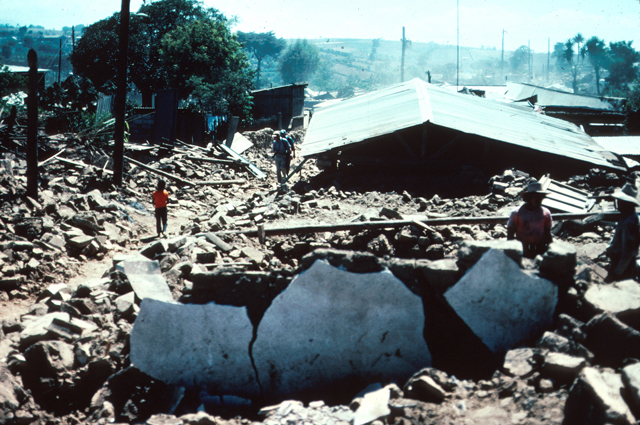21 April 2022–Public tests of an earthquake early warning system in Nicaragua are among the latest steps in a collaboration to build a warning system for four countries in the region, Frederick Massin of the Swiss Seismological Service at ETH Zürich said at the Seismological Society of America’s Annual Meeting.
The project—Alerta Temprana de Terremotos en América Central (ATTAC)—is a collaboration between the national seismic networks in Guatemala (INSIVUMEH), El Salvador (MARN), Nicaragua (INETER) and Costa Rica (OVSICORI-UNA) and the Swiss Seismological Service at ETH Zürich, with funding from the Swiss Agency for Development and Cooperation. Earthquake early warning is a necessity in a region where both large subduction zone and moderate crustal earthquakes have the potential to cause devastation, said project coordinator John Clinton, also of the Swiss Seismological Service at ETH Zürich.

“In every one of these countries, in living memory, earthquakes have occurred that have had significant fatalities, often in the capital cities,” Clinton said. “More than twenty thousand people have died in two of the four countries [Nicaragua and Guatemala] in the 1970s, so there is raw feeling and raw emotion. Further, on a regular basis, people are experiencing felt earthquakes.”
Earthquake early warning algorithms have been installed in all four countries as part of ATTAC, and 71 strong motion stations have been installed to supplement sometimes patchy coverage, most notably in Guatemala, said Clinton.
“We’ve worked hard to make sure we went beyond just having stations in the ground but also that they were capable of recording strong motion data with low latencies,” he noted. Recent tests of the system demonstrate that it can produce warnings seconds before the strong ground-shaking S waves arrive from offshore shallow subduction zone earthquakes, typically identified within 10 to 20 seconds of their origin times.
Late last year in Nicaragua, the local project partner INETER began sending warnings to test users at about 70 different institutions in Managua, including markets, airports, embassies, and civil and defense ministries, Massin said. The warnings are sent using a digital TV platform in collaboration with Japanese engineers developing local digital TV services that are already established in the region.
“Even though digital TV is the vanguard of what we’re doing with regards alert delivery, we’re also looking at cell phone alerts as well as sirens, like in Mexico City,” Massin said.
Unlike earthquake early warnings in other parts of the world, such as the ShakeAlert system for the U.S. Pacific Coast, the alerts are not delivered only to specific areas where ground shaking reaches a certain intensity threshold. “Most Central American countries are small, they are similar size to Switzerland or Greater Los Angeles,” Clinton explained. “So our first approach is if you have something that’s relevant to any part of the country, alert the whole country.”
Interest in earthquake early warning is currently high, he added, so that “the expectation in these countries is that any alert is better than no alert. This means that we can take a risk and start implementing the system right away, which is different from Europe or the U.S. or Japan where you want to have your system absolutely bulletproof before you go live.”
However, the challenge remains to explore what information users in Central America want and expect from a warning system, and whether some of the usual messages—like “duck, cover and hold”—are the best for countries where mud-block buildings with heavy roofs are prone to collapse under even moderate shaking.
The project is planned to last two more years, in which time Clinton said there should be public earthquake early warning operating in Nicaragua and a good head start on operations in the other three countries. Knowledge transfer has been a focus of efforts throughout the project.
Although ATTAC has been challenging, the researchers have been pleased with the successes so far.
“Together with each national institution, we have succeeded to build EEW systems that work similarly well in each country despite their manifold differences,” Clinton said. “We have the potential to provide a ShakeAlert-style system across Central America.”
